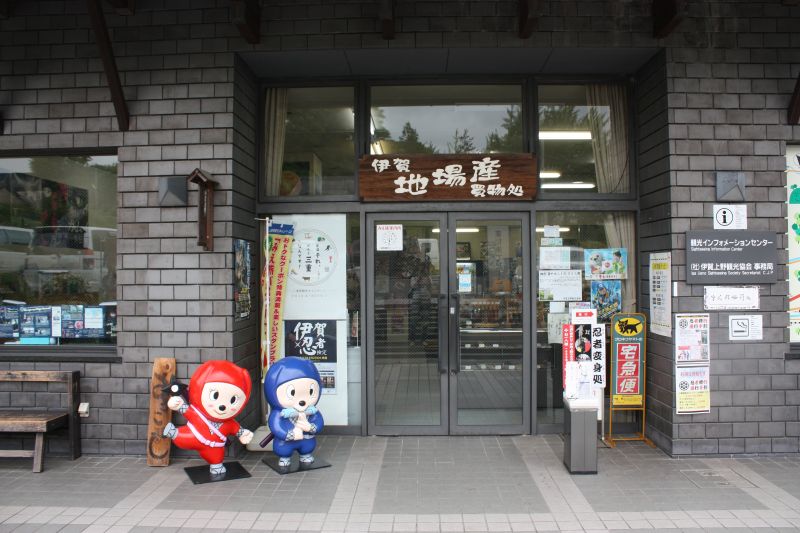
Feel History
Visit places carved with history and ponder the past with the three roads where people and goods once came and went as well as the old townscape, also known as “Little Kyoto”, that evokes a feeling of nostalgia.
Iga-Ueno Castle and The Castle Town
A Famous Castle Built by Todo Takatora and Its Castle Town
Todo Takatora was considered as a master castle builder. Iga-Ueno Castle and the castle town, both of which were built by Todo Takatora, still retain buildings and streets with a richly historical atmosphere.
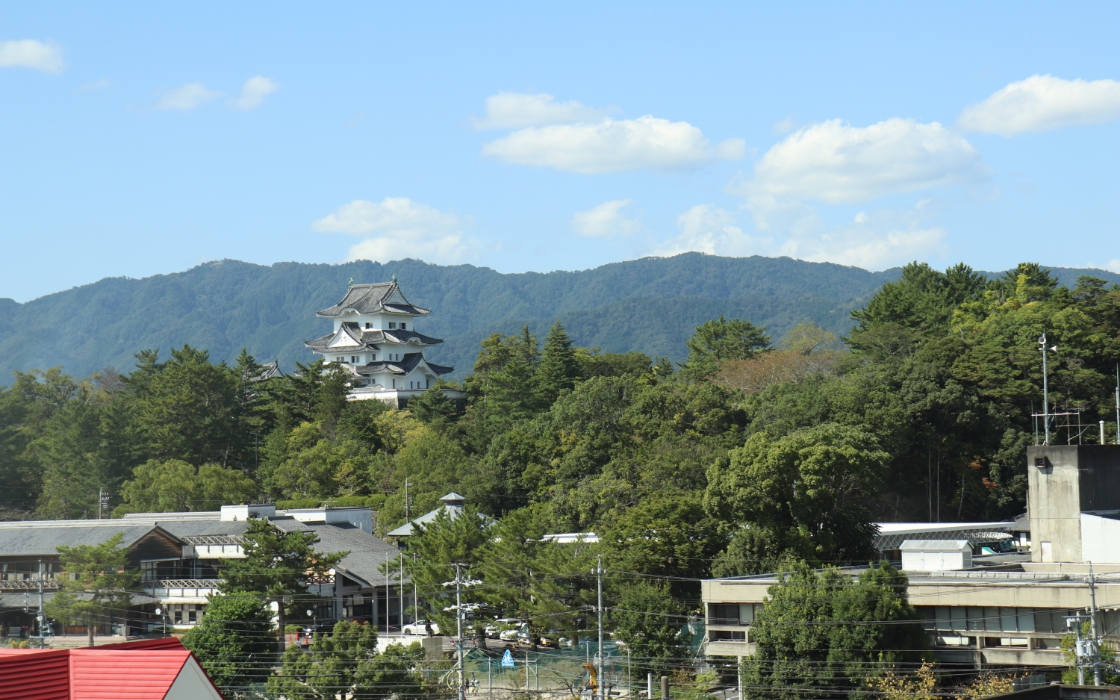
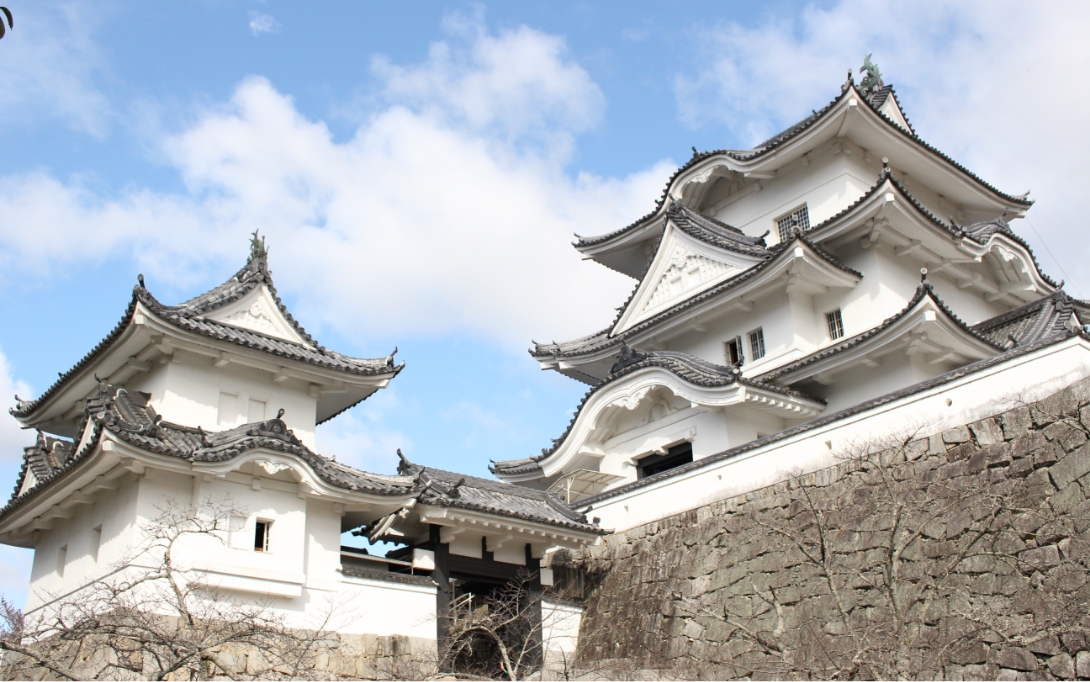
A Mock Castle Tower Built by a Local Representative
The current incarnation of Iga-Ueno Castle is a reconstruction of the original castle built by Todo Takatora, constructed in 1935 by Katsu Kawasaki as the Iga-Ueno Cultural and Industrial Castle.
It is a beautifully three-tiered castle that resembled a phoenix resting its wings, hence its nickname “White Phoenix Castle”. Todo originally built it with a five-story castle tower, but the tower collapsed in a massive storm that struck the area in 1612.
The high stone walls built by Todo remain in their original state.
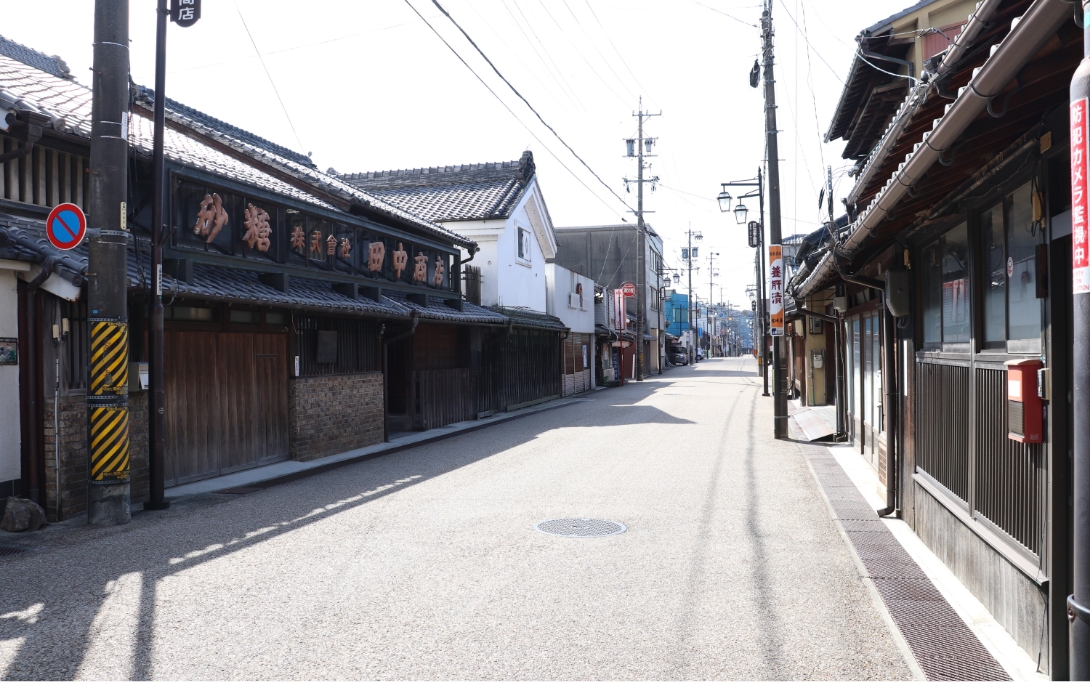
A Historic Town That Escaped the Ravages of War
Following the construction of the castle by Todo Takatora, the area prospered as a castle town of the Iga-Ueno clan, with a grid-shaped layout that earned it the nickname “Little Kyoto”. Due to the total destruction caused by the Tensho-Iga War, few buildings from before the war remain, but the city center was spared, meaning many historical buildings can still be found there. The town is also lined with traditional Japanese confection shops, partly because of Todo’s affinity for the tea ceremony.
伊賀上野城
美しい木造の天守閣と日本1、2の高さの高石垣、築城の名手、藤堂高虎によって造られた伊賀上野城。その石垣は日本1、2の高さ(約30m)を誇ります。
現在の天守閣は、1935年に川崎克によって復興されたものですが、木造の建物内はまさに戦国時代の雰囲気そのまま。三層からなる城内には、武具や甲冑など、藤堂家ゆかりの品々が展示されています。最上階の天井には、横山大観などの色紙46点が飾られおり、そこから城下町を見下ろす眺めも格別です。
※現在伊賀上野城のある場所には、もともと平楽寺という大寺院がありました。織田信長の天正伊賀の乱の際には、伊賀勢の拠点の一つになりましたが、伊賀勢の敗北とともに焼け落ち、その後、豊臣秀吉の家臣、筒井定次が城を建てました。さらにその後、徳川家康が大阪城に対抗するため、築城の名手、藤堂高虎が改修していましたが、大嵐により倒壊してしまいます。しかし大阪の陣で家康が勝利したので、天守が再建されることはありませんでした。
| Adress | 106 Uenomarunouchi,Iga City,Mie |
|---|---|
| Contact | TEL:(+81)595-21-3148 HP:http://igaueno-castle.jp |
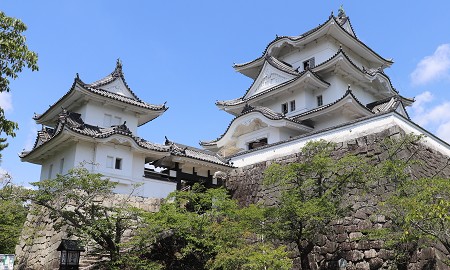
Ueno Tenjingu Shrine(Sugawara Shrine)
Sugawara Shrine, Also Known As “Tenjin-san”
Sugawara Shrine is often called “Ueno Tenjingu Shrine” and is known colloquially as “Tenjin-san”.
The shrine is dedicated to Lord Sugawara no Michizane, the principal deity of the 6,000 households of the former Ueno Town, and is also revered as an ancestral deity of literature as well as a guardian deity of cattle and horses.
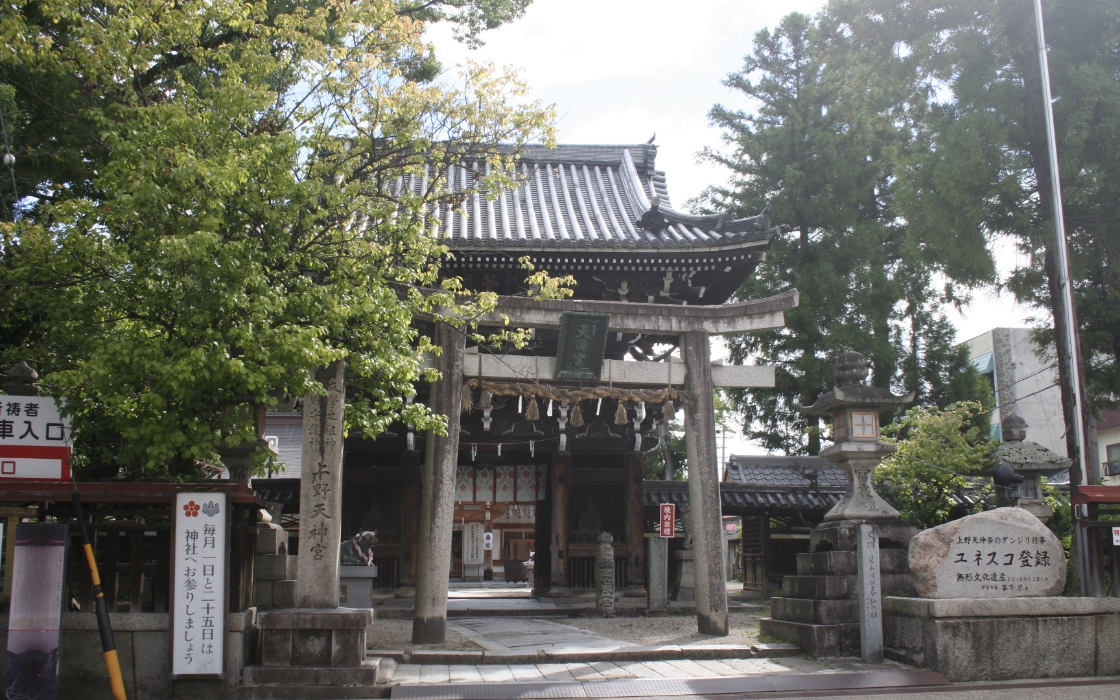
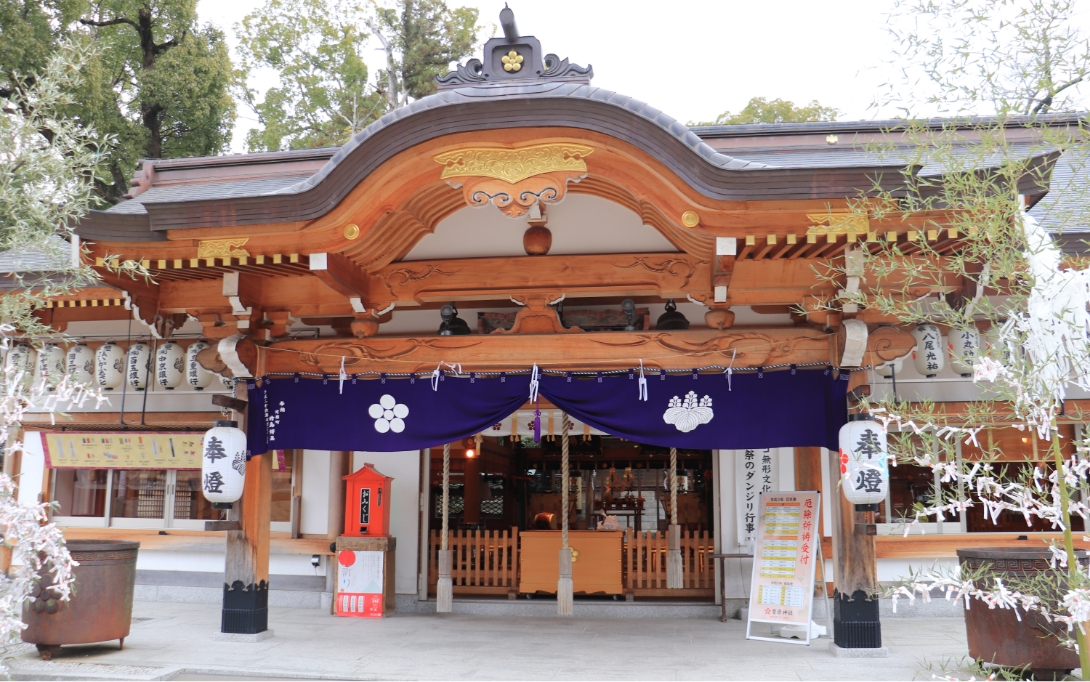
The Guardian Deity of the Iga-Ueno Castle Town in the Current Main Hall
While it is unknown when Sugawara Shrine was founded, in antiquity, it enshrined the deity of agriculture that protected Heirakuji Temple on Mount Ueno (present-day Iga-Ueno Castle). It was burned down along with Heirakuji Temple during the Tensho-Iga War in 1581 and later rebuilt. When Todo Takatora built the castle town in 1611, the shrine was moved to this location and enshrined as the castle town’s guardian deity.
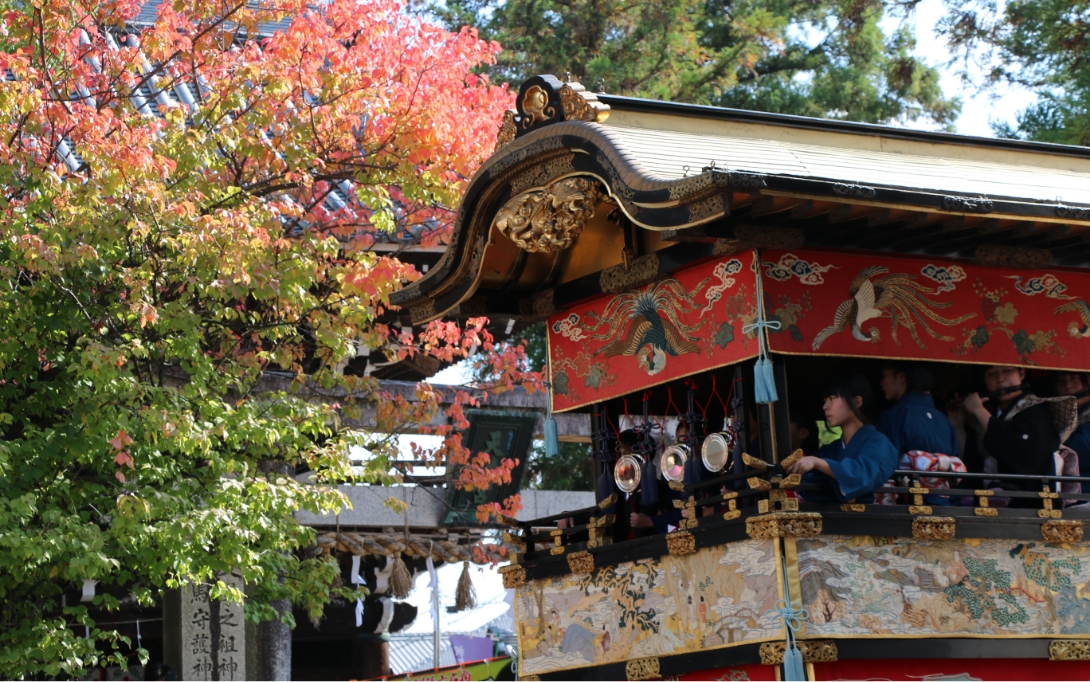
An Autumn Festival Designated as Intangible Cultural Heritage
With a history of more than 400 years, the Ueno Tenjin Festival is said to be one of the three major autumn festivals in the Kansai region. The festival is dedicated to this shrine every October and was designated as a National Important Intangible Folk Cultural Property on February 12, 2002. Additionally, the Danjiri procession of the Ueno Tenjin Festival was registered on December 1, 2016 as a UNESCO Intangible Cultural Heritage under the name “Yama, Hoko, Yatai, float festivals in Japan”.
上野天神宮(菅原神社)
「天神さん」の愛称で親しまれる菅原神社
秋祭り「上野天神祭」は国の重要無形民俗文化財です。
学問の神様として菅原道真公を祀る菅原神社。上野の天神さんは、松尾芭蕉が処女句集「貝おほひ」を奉納したことでも知られています。境内には牛の像があり、撫でるとご利益があると言われています。
| Adress | 2929 Uenohigashimachi,Iga City,Mie |
|---|---|
| Contact | TEL:(+81)595-21-2940 HP:https://www.sugawara25.jp/ |
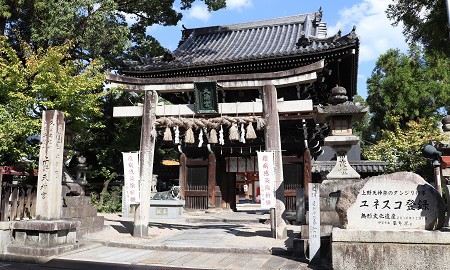
The former Oda Elementary School
A Symbol of the Origins of Modern Primary School Education
The former Oda Elementary School main building, a Mie Prefecture-designated Cultural Property, was constructed in 1881 and is the oldest existing elementary school building in the prefecture.
It was designated as a Tangible Cultural Property of the prefecture on March 27, 1975 and serves as a monument symbolizing the early days of the modern elementary education system.
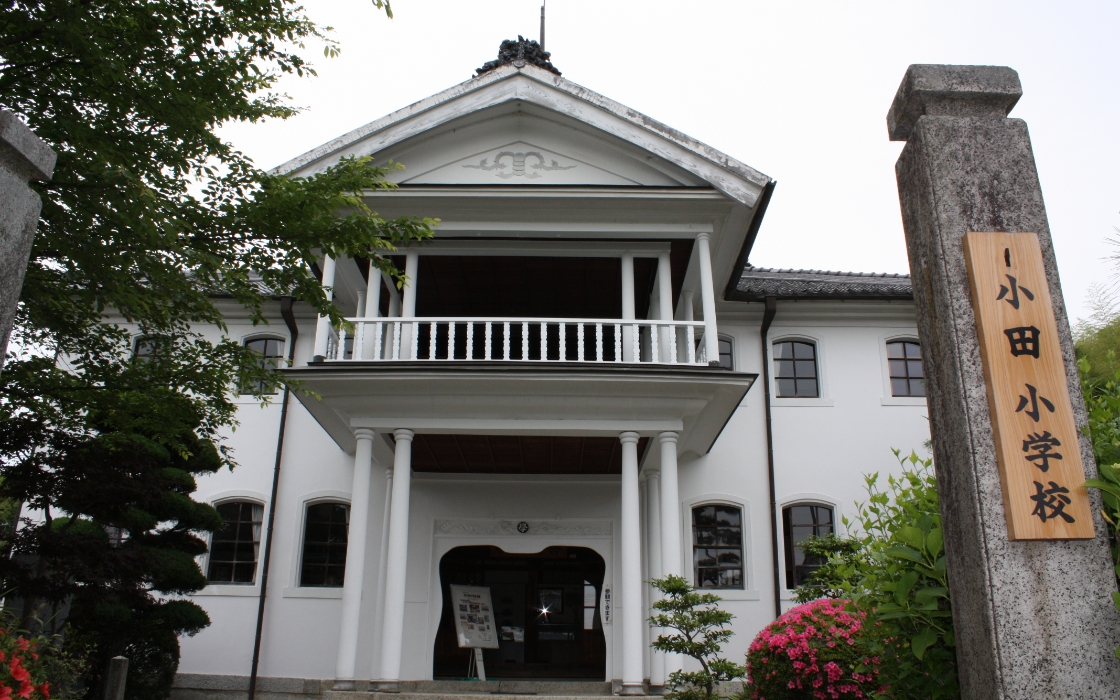
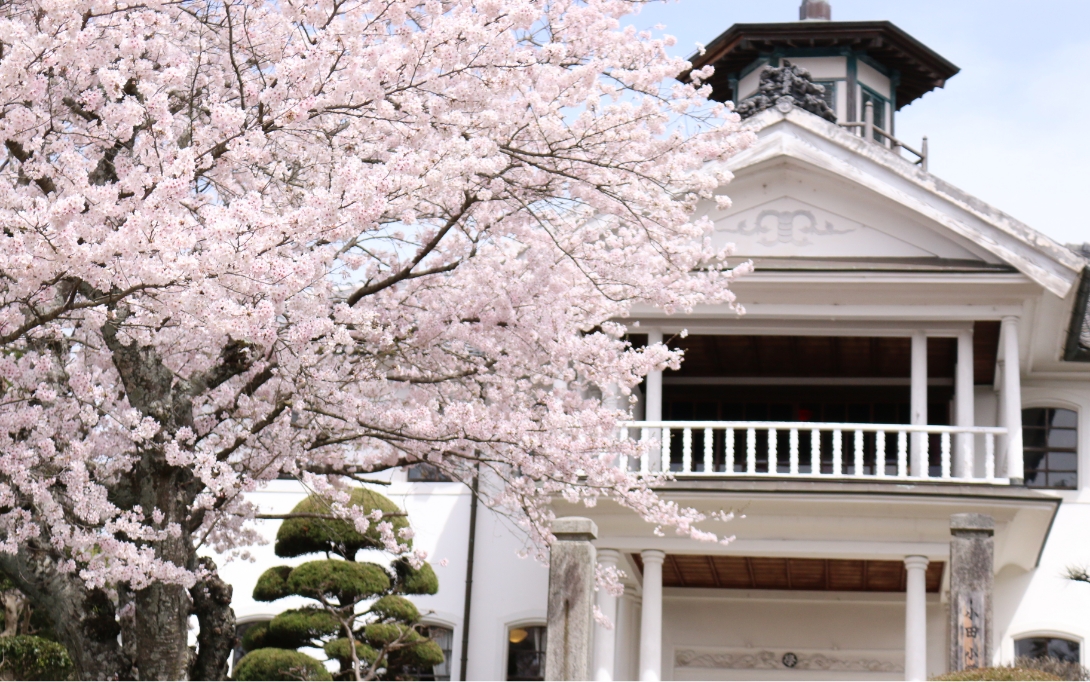
The Oldest Existing Elementary School Building in the Prefecture
This two-story wooden Western-style building has a hipped, pantiles roof, and a total site area of 274 square meters. The entasis of the column that bulges in the center and the gabled front porch are the most elaborate parts of the building, and the balcony located at the front of the second floor is unusually eye-catching.
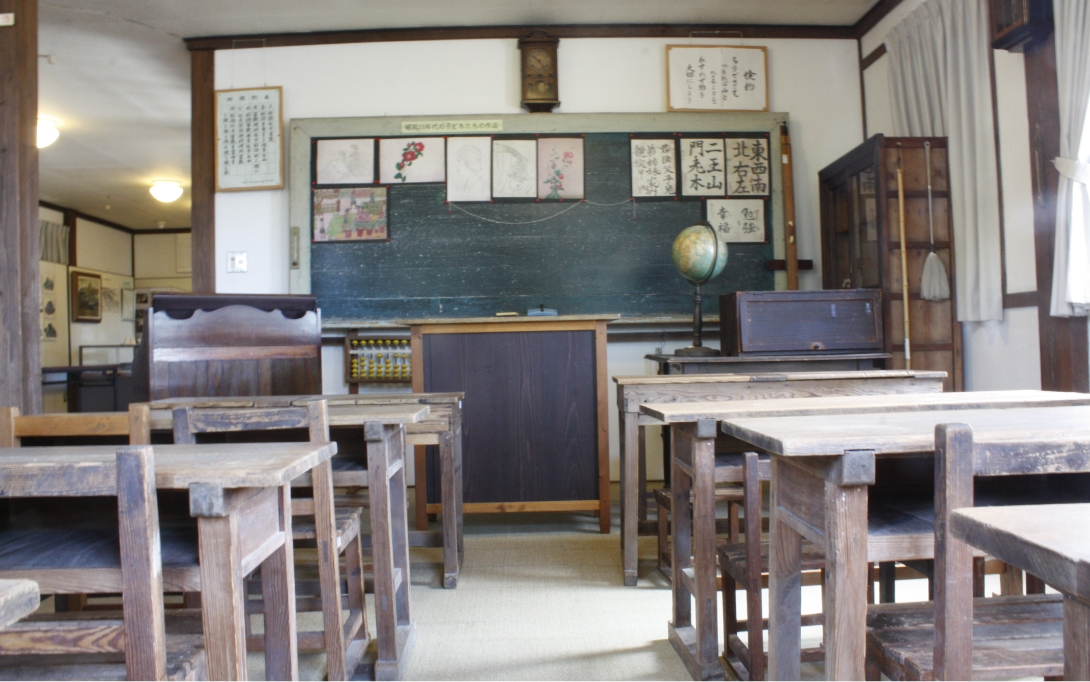
Fascinating Documents from the Past
The second floor of the school building is an exhibition room where items such as textbooks, desks, organs, works created by children, and ink-smeared textbooks from the early Meiji Era (1868-1912) to around 1965 can be seen. The restored stained-glass window is another highlight.
旧小田小学校本館
現存する小学校校舎としては三重県最古です。木造洋風二階建ての寄棟造り。屋根中央の太鼓楼や、正面ポーチとバルコニー、当時のギヤマンから復元した色ガラスも見どころです。
校舎内では、懐かしい昔の教室の復元や、教科書など近代初等教育資料を展示しています。
県の有形文化財に指定されています。
| Adress | 141-1 Otacho,Iga City,Mie |
|---|---|
| Contact | TEL:(+81)595-21-9957 HP:http://www.bunto.com |
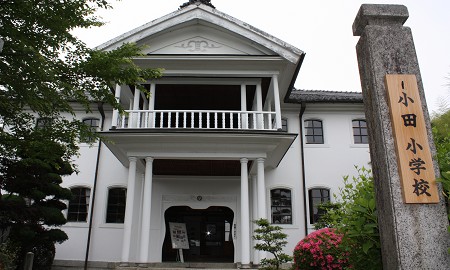
Samurai Mansion, Irimajiri Residence
The Distinctive Thatched Roof of the Main Building
The Irimajiri Family Residence is a mansion given to Kanpei Irimajiri when he moved during the Kansei Era (1789-1800). During the Edo Period, the majority of samurai residences were owned by the clan and leased to feudal retainers, who would live in housing according to their duties and salaries.
Today, peonies are planted in the fields here, making it one of the best spots in Iga to see peonies.
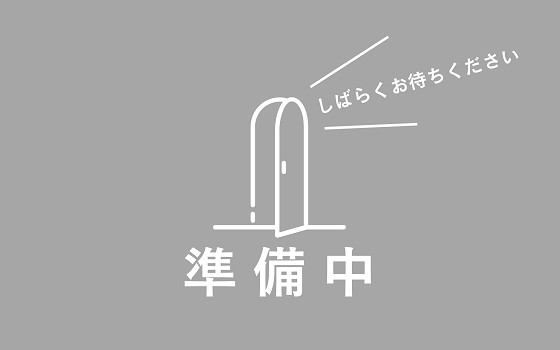
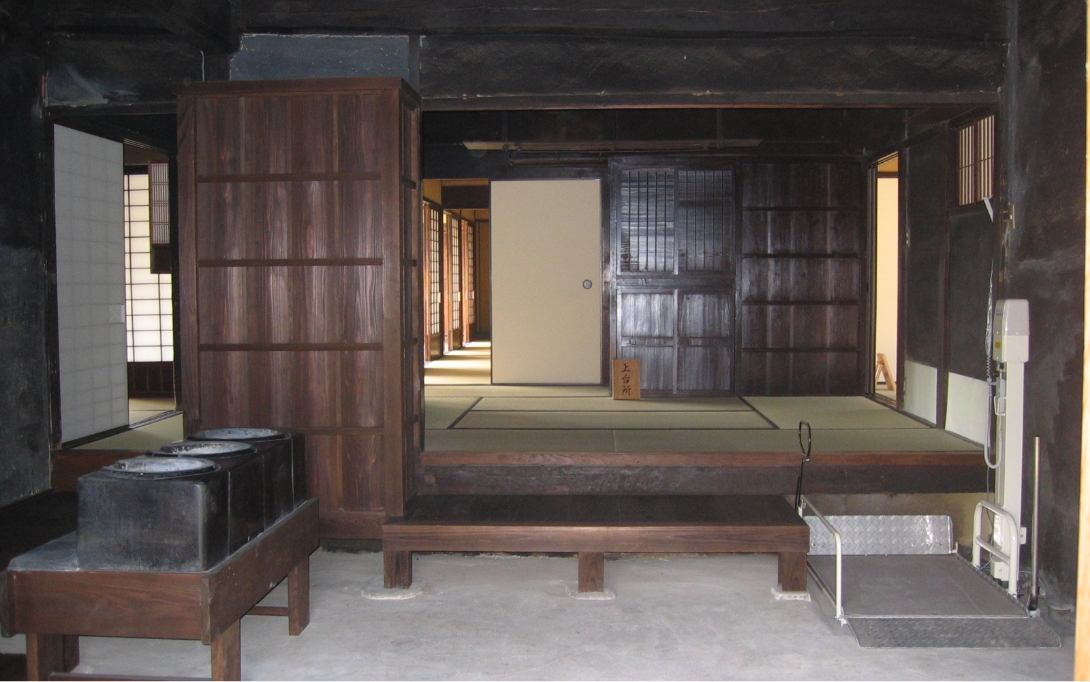
An Authentic Samurai Mansion, Just Like in the Movies
The gate of the Irimajiri Family Residence, called a Nagayamon gate, is a distinctive feature of samurai residences.
There are two entrances to the main building: a ceremonial entrance at the front used by visiting superiors, and a side entrance to the left of the ceremonial entrance for family members and other visitors. The rooms on the north side of the main building served as spaces to entertain guests, while the rooms on the south side were private living quarters.
Each room in the main house had wooden flooring; tatami mat flooring was not used at all.
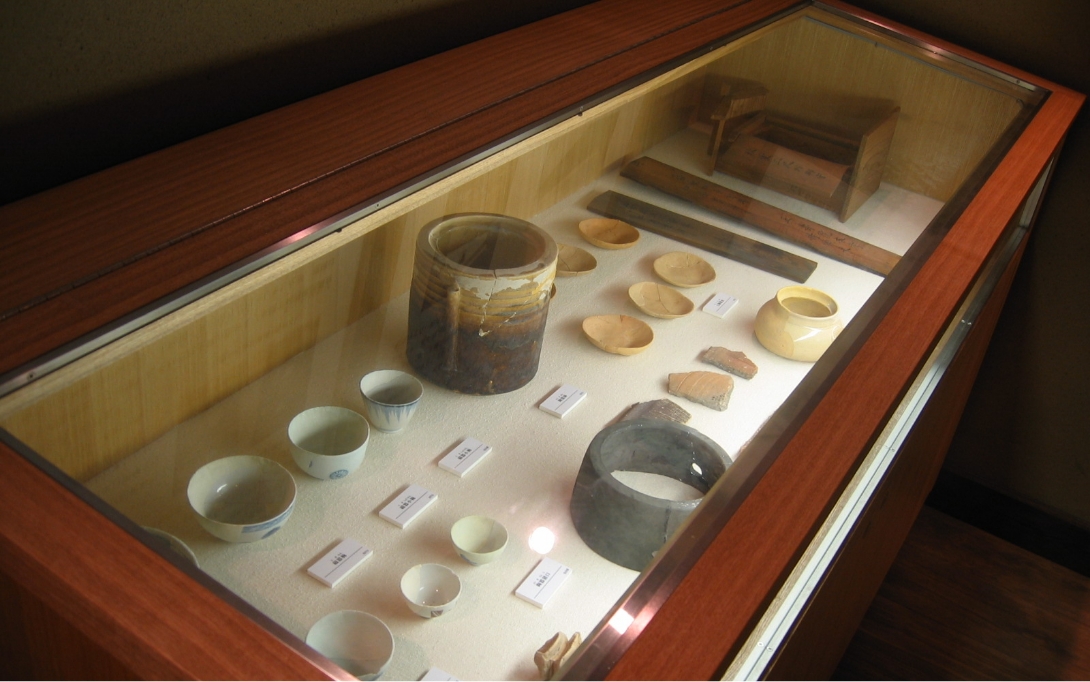
Historical Materials on Display in the Exhibition Room
According to the illustrated map, the site included the main house, the Nagayamon gate, the front house, an earthen storehouse, a miso room and rice warehouse that no longer exist today, among other buildings. There were also gardens and fields to the south and east of the main house.
These fields have since been planted with peonies, making it one of the best places in Iga for seeing peonies.
The room on the east side is an exhibition room where historical information and materials related to the Irimajiri family are on display.
武家屋敷 入交家住宅
長屋門の残る
江戸時代の武家屋敷を見学土間、主屋、座敷、丸窓のある茶室など、本格的な武家屋敷を見学できます。
長屋門は武家屋敷の特徴のひとつで、禄高によって形が決められていました。
| Adress | 2828 Uenoaioicho,Iga City,Mie |
|---|---|
| Contact | TEL:(+81)595-26-0313 HP:http://www.bunto.com |
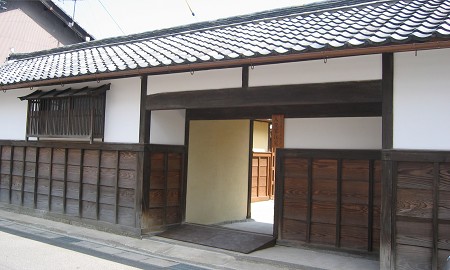
Ueno-Tenjin Festival
The Ueno Tenjin Festival, an Event with More Than 400 Years of History
The Ueno Tenjin Festival is an autumn festival held at Ueno Tenjingu Shrine, and the largest autumn festival in Iga with a history of over 400 years. Its highlights include a parade of portable shrines accompanied by more than one hundred demons and nine gorgeously decorated Danjiri floats.
The Danjiri procession at the Ueno Tenjin Festival was designated as a National Important Intangible Folk Cultural Property in February of 2002 and was also registered as a UNESCO Intangible Cultural Heritage in November 2016 under the name “Yama, Hoko, Yatai, float festivals in Japan”.
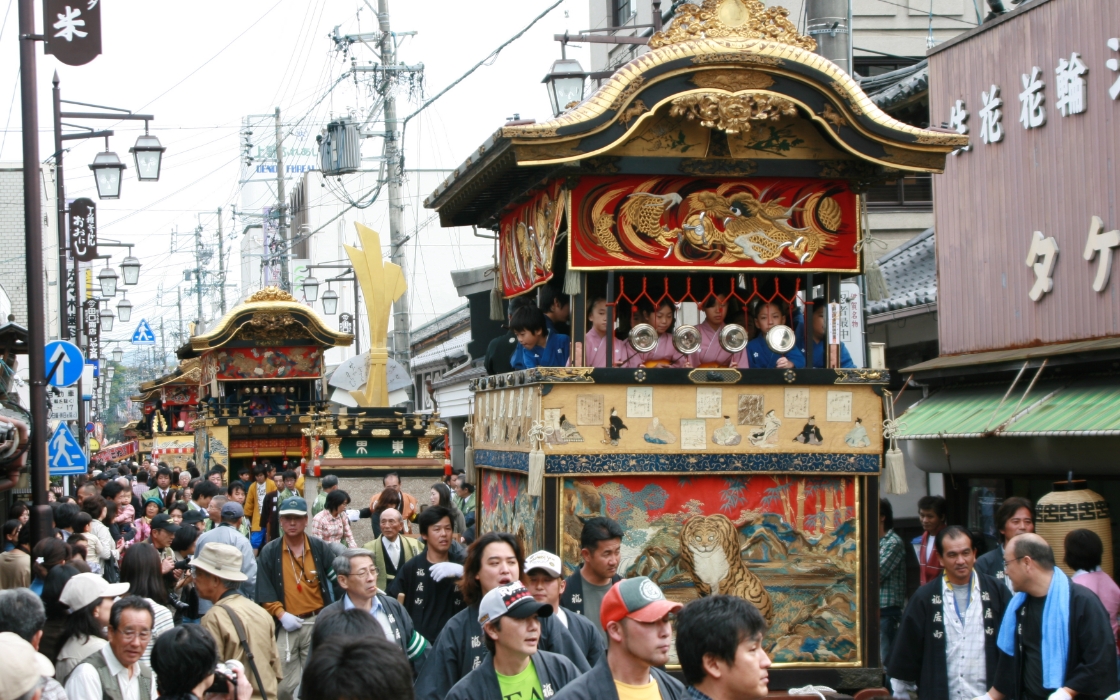
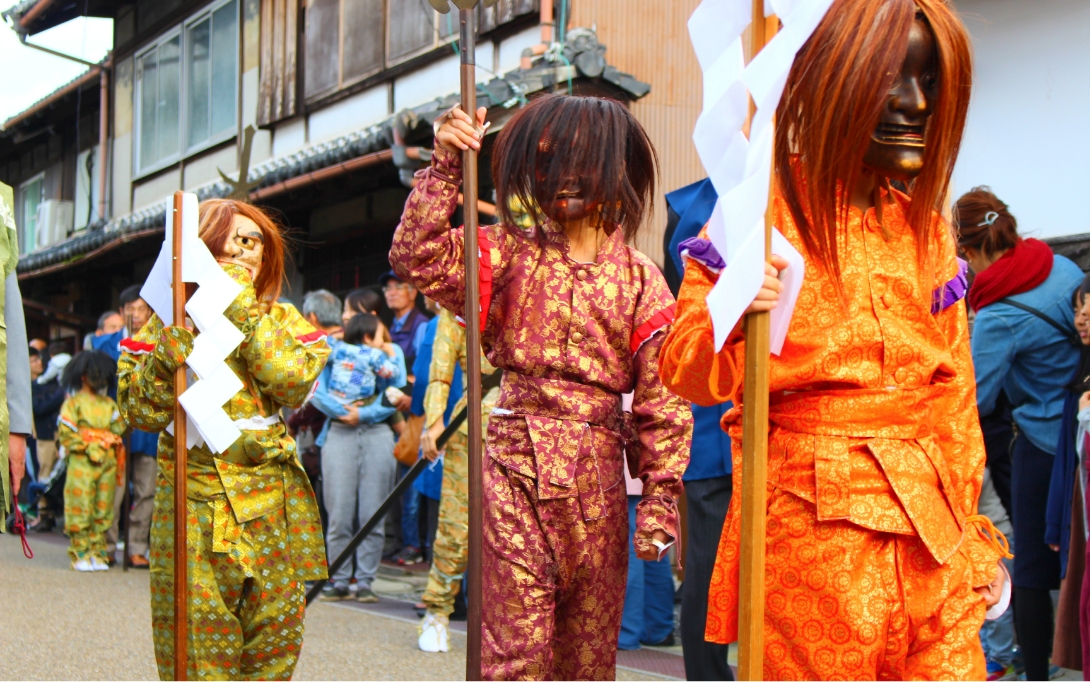
The Demon Procession, a Rare Event Even in Japan
During the Todo clan’s reign over Iga, this festival went from being primarily a procession of portable shrines to including shirushi (altars bearing the banners of each neighborhood) and stalls playing festival music, developing into the “Shirushi, Demons, and Danjiri” parade that exists today.
A procession of more than a hundred demons parades through the streets, accompanying the portable shrines as heralds, some of whom wear a mask known as “En no Gyoja” said to have been donated by Todo Takatora, the first feudal lord of the domain, as an answer to his prayers at Shugendo Temple in the castle town for the quick recovery of an eye ailment from which he was suffering.
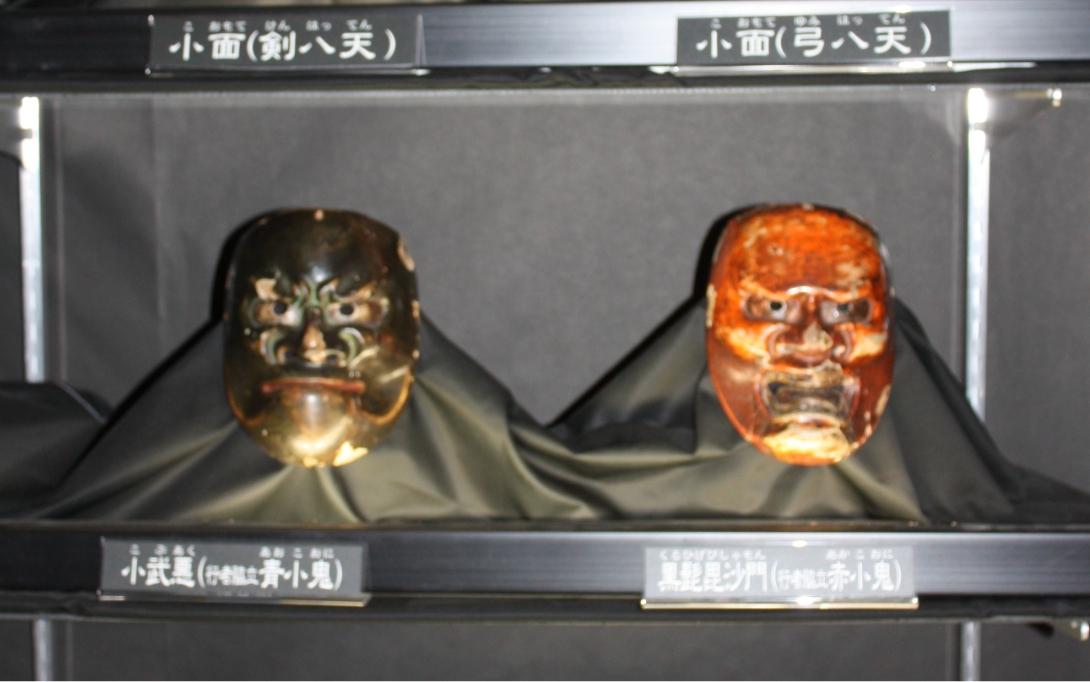
Each Danjiri Float and Mask a Valuable Cultural Asset
The most distinctive feature of this festival is the Shirushi, which represent deities, paired with spectacular performances by the Danjiri that accompany them. The curtains and metal fittings of the Danjiri as well as the Noh masks used in the demon procession are of high cultural value, and some have been designated as cultural properties of the prefecture and the city. Originally a way to express gratitude for harvests and disease eradication, the festival has evolved over time, adopting a style similar to the Gion Festival in Kyoto. Today, it is a major traditional autumn event in the Iga region.
上野天神祭
ユネスコ無形文化遺産に登録されている「上野天神祭のダンジリ行事」(国指定重要無形民俗文化財)。百数十体の鬼行列と絢爛豪華なだんじり曳行。
| 開催日 | 令和5年10月20日(金)~ 22日(日) ※10月25日までの直近の日曜日、その前日と前々日 |
|---|---|
| 会場 | 上野天神宮・伊賀市上野三筋(本町筋・二之町筋・三之町筋)町 |
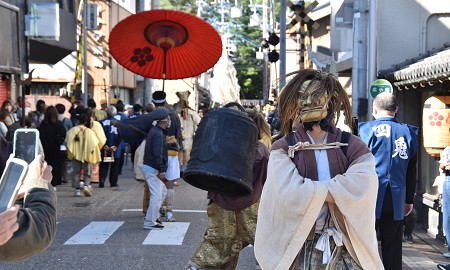
Shindaibutsuji Temple
The Model Used in the Reconstruction of Todaiji Temple's Great Buddha Hall
Shindaibutsuji Temple, founded in 1202, is the Iga branch of Todaiji Temple established by Minamoto no Yoritomo as an imperial temple for Emperor Go-Toba, one of seven branch temples in Japan. The Buddhist monk Shunjobo Chogen named it "Shindaibutsuji", meaning "New Temple of the Great Buddha," adding the character "Shin" ("new") to honor Todaiji Temple.
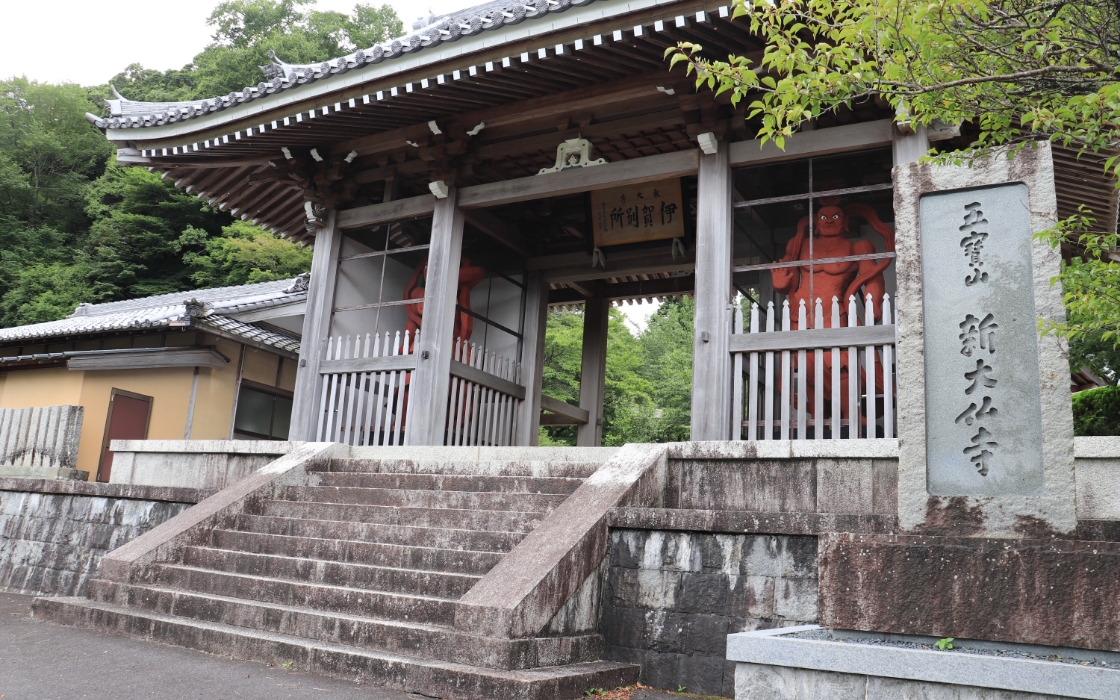
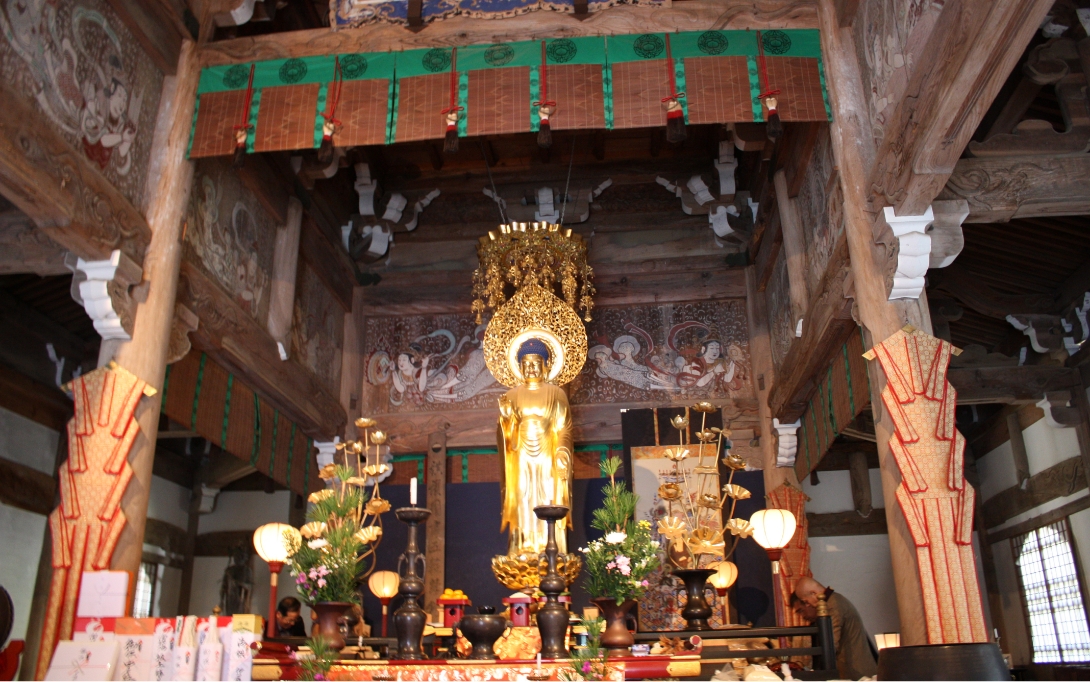
The Great Buddha of Awa
The New Great Buddha Hall and Treasure Storehouse
The principal image of worship here is a statue of the Great Buddha sculpted by Kaikei, a famous Buddhist sculptor from the Kamakura Period (1185-1333). The statue, made of cypress and standing over 4 meters tall, is known as the "Great Buddha of Awa" and is a designated National Important Cultural Property that is currently enshrined in the New Great Buddha Hall.
Shindaibutsuji Temple also enshrines several items designated as National Important Cultural Properties or cultural properties of Mie Prefecture or Iga. One of these is a statue of Chogen, one of only four in Japan, with the others located at Todaiji Temple, Jodoji Temple (Hyogo Prefecture), and Amidadera Temple (Yamaguchi Prefecture).
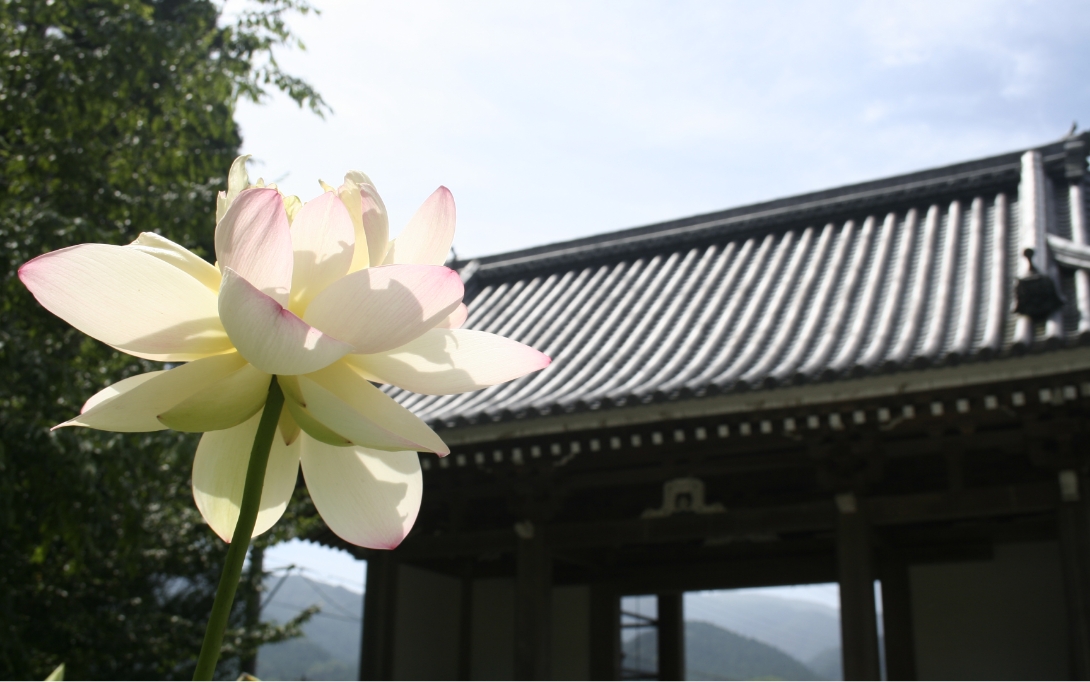
Discover a Haiku Monument to Basho Here
On the temple grounds is a monument inscribed with a haiku from Matsuo Basho's "Knapsack Notebook": "A holy image, sixteen feet high / Shimmering heat waves rise / From the stone foundation."
Iwaya Fudo Statue: The Gomado Hall faces the stone Buddha statue of Fudo Myoo, and on the 1st and 15th day of each month, the Goma Kuyo (Buddhist fire ritual) is held. On the 28th day of the month, considered an auspicious day for Fudo Myoo, the Goma prayer ceremony is held to grant wishes.
In late July, 40 pots of pink and white lotuses bloom along the approach to the temple grounds.
新大佛寺
快慶作の木造如来仏は「阿波の大仏さん」として親しまれています。
一説には東大寺大仏殿復興時のモデルとも言われている由緒あるお寺。
本尊の木造如来仏は仏師快慶作で、古くから「阿波の大仏さん」として広く人々に親しまれています。境内には多くの重要文化財や、芭蕉の句碑があります。
| Adress | 1238 Tominaga,Iga City,Mie |
|---|---|
| Contact | TEL:(+81)595-48-0211 HP:http://www.shindaibutsu.or.jp |
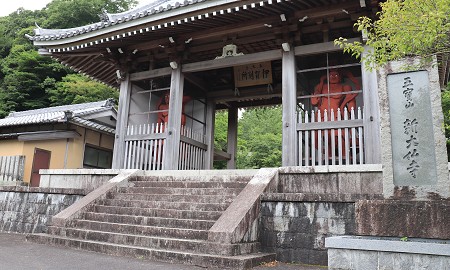
Samurai mansion, Akai Residence
A Samurai Residence That Doubles as a Rental Room
The Akai Family Residence is a registered Tangible Cultural Property (Structure) located in the Ueno-Shinobicho area of Iga. This renovated samurai residence has been turned into a hotel for visitors.
The facilities feature several buildings, including a main building, storehouse, and tearoom, all of which exude the traditional atmosphere of the castle town. There's also a well-kept garden left by the previous owner that visitors can enjoy. Along with rental rooms, guests are free to explore and admire the garden at their leisure.
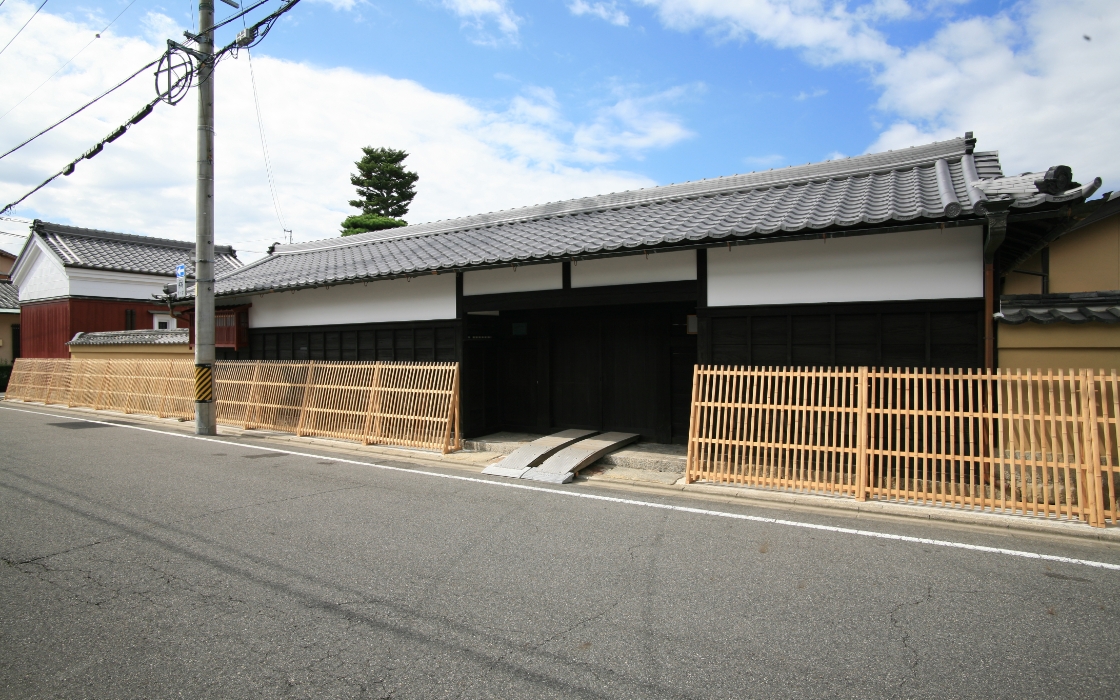
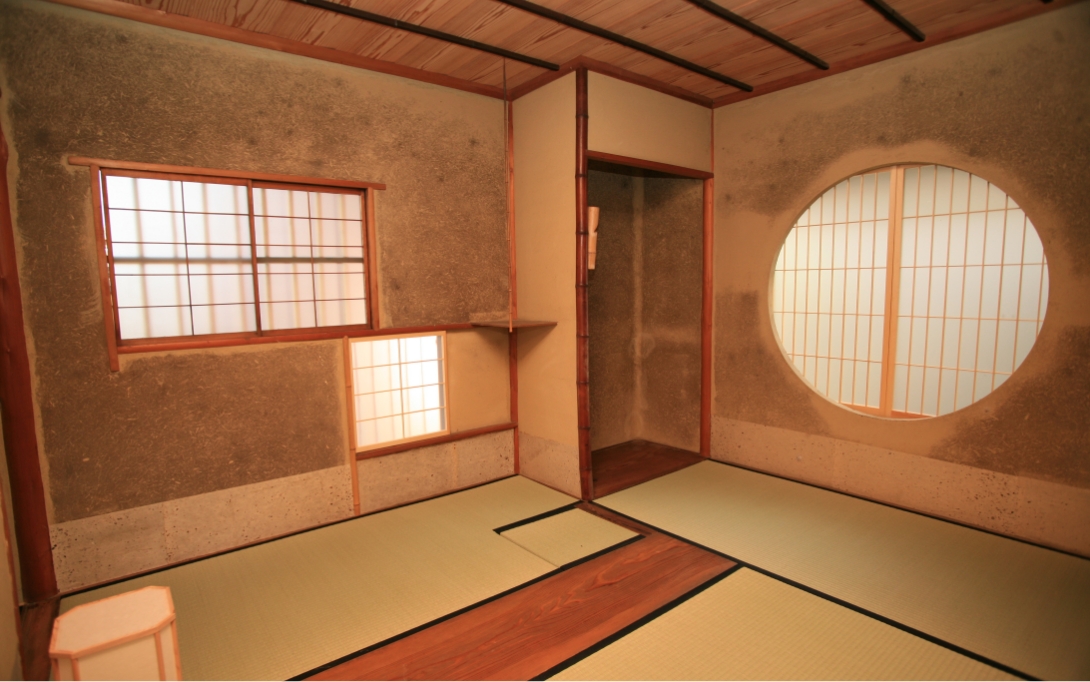
The Former Home of a Fierce General
The Akai Clan, who once served as the lords of Kuroi Castle in Tanba Province, were confined to their estate in Kyoto, but were later summoned to Iga by Todo Takatora, where they were appointed to command a troop of soldiers and given a stipend of 180,000 liters of rice. The Ueno-Shinobicho area is the site of many samurai residences stretching across the area south of Misujicho in Ueno Castle Town. The Akai Family Residence is located on the west side of Nakanotachimachi-dori Street, which runs through the castle town from north to south.
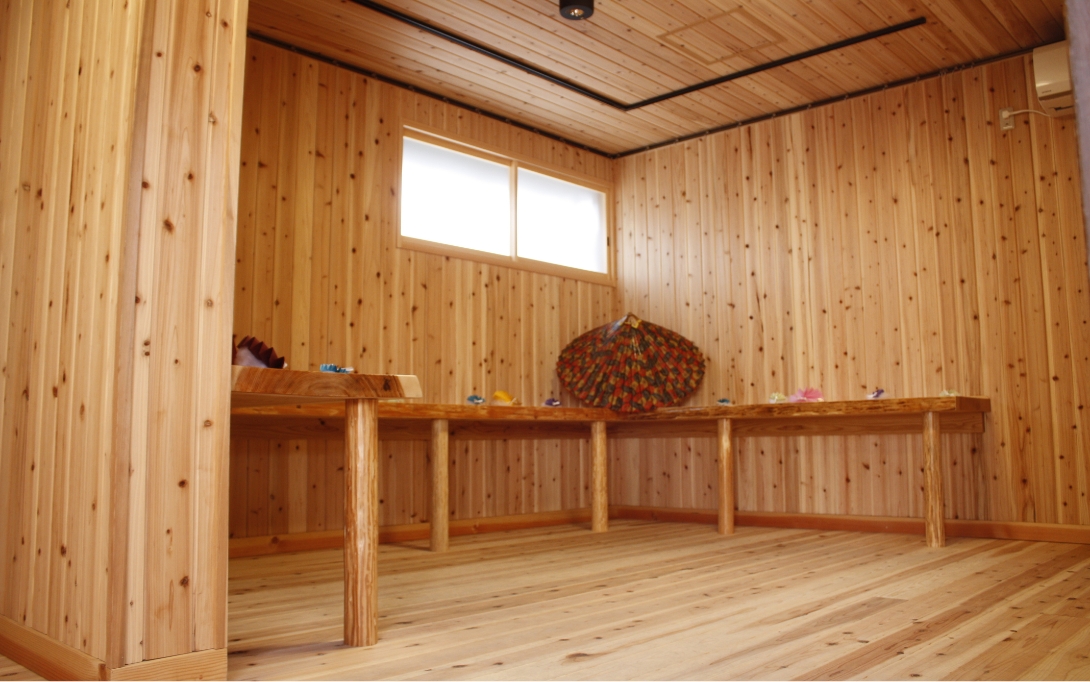
Five National Cultural Properties Situated on the Premises
The Nagayamon gate was built at the end of the Edo Period (1603-1867). Although the main building was rebuilt during the Meiji Era (1868-1912), the current floor plan is the same as that of the original samurai residence. On September 10, 2010, the main building, tearoom, storehouse, and Nagayamon gate of the Akai Family Residence were all designated as National Registered Cultural Properties.
武家屋敷 赤井家住宅
長屋門のある武家屋敷を改修
イベントなどの貸し部屋としても活用
| Adress | 2491-1 Uenoshinobicho,Iga City,Mie |
|---|---|
| Contact | TEL:(+81)595-51-7578 HP:http://www.bunto.com |
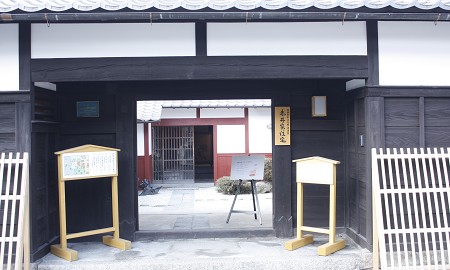
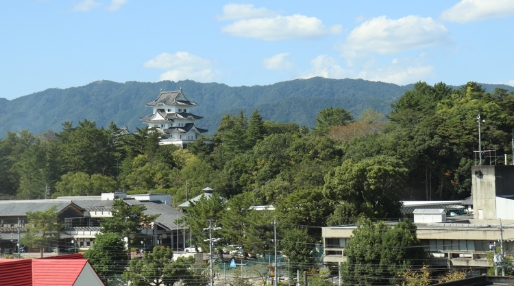
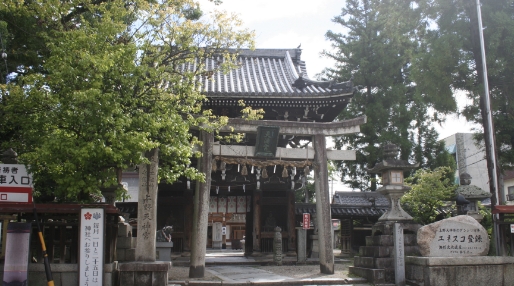
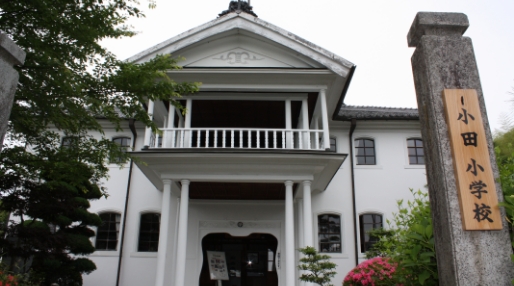
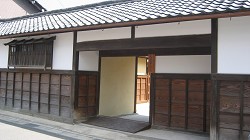
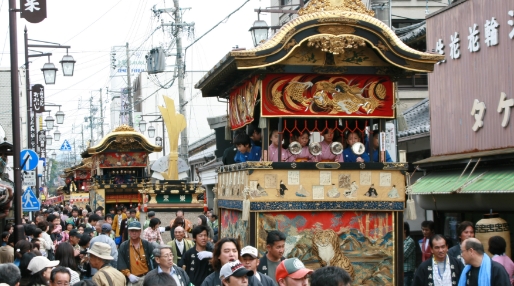
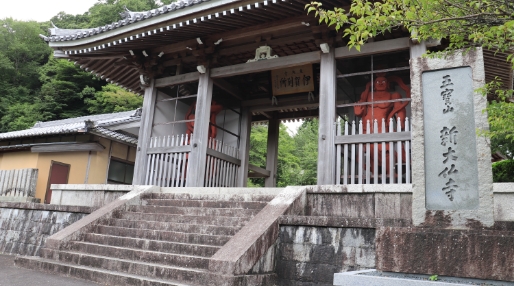
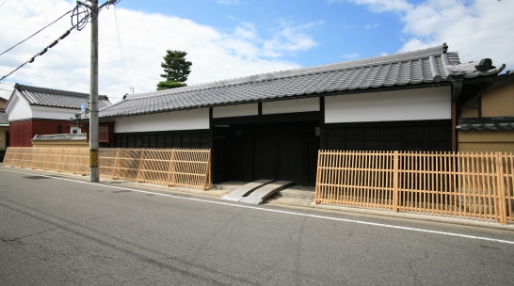
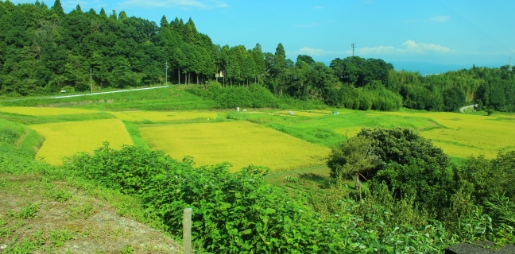
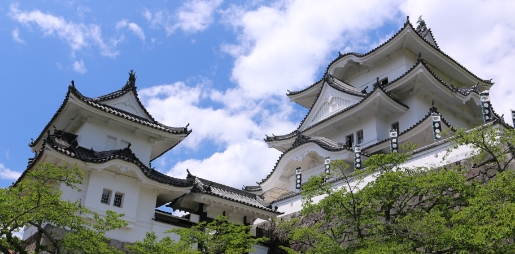
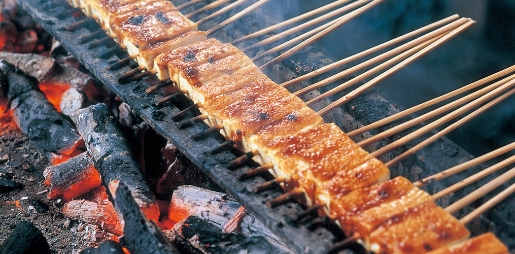
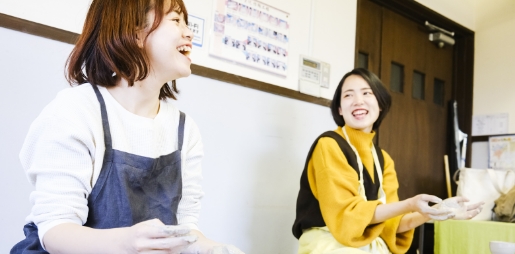
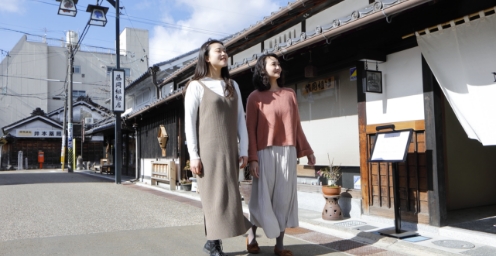
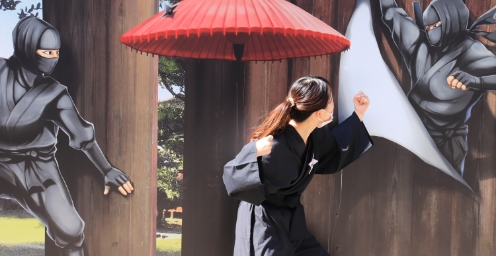


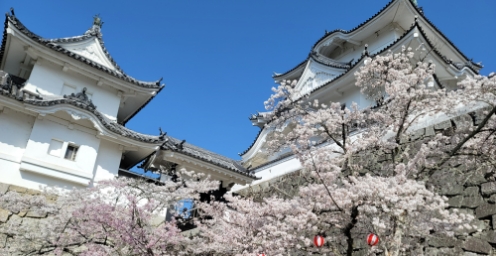
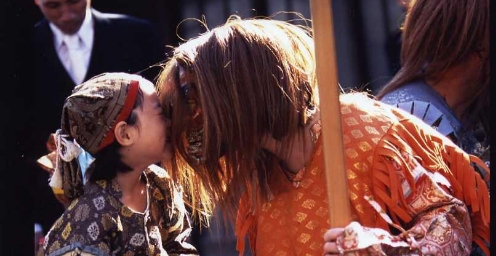
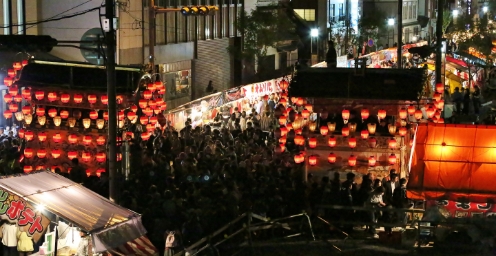
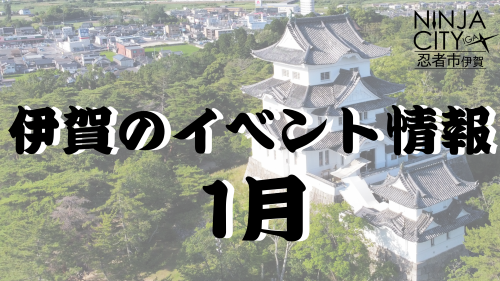


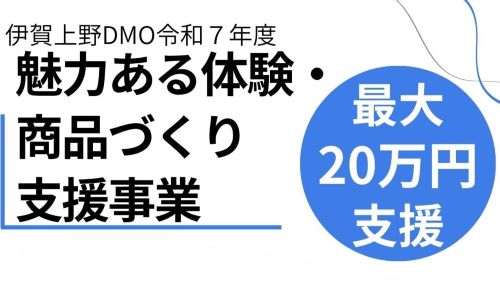
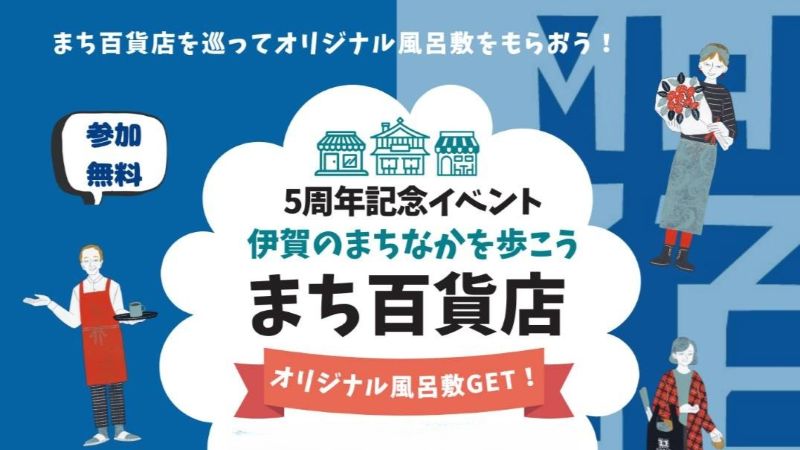
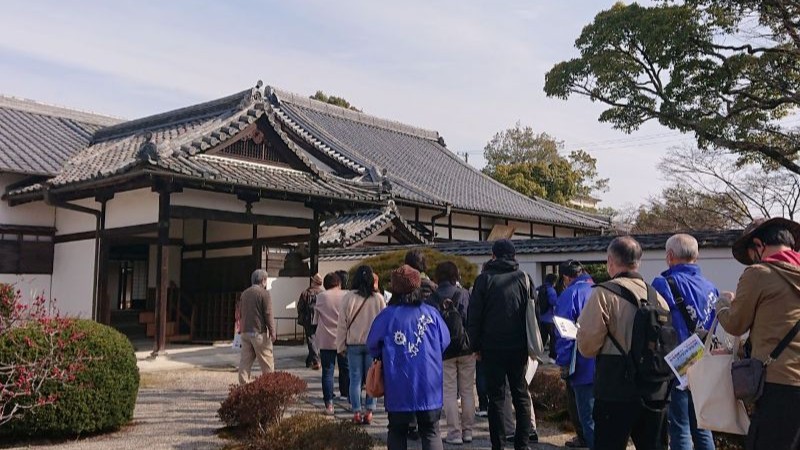
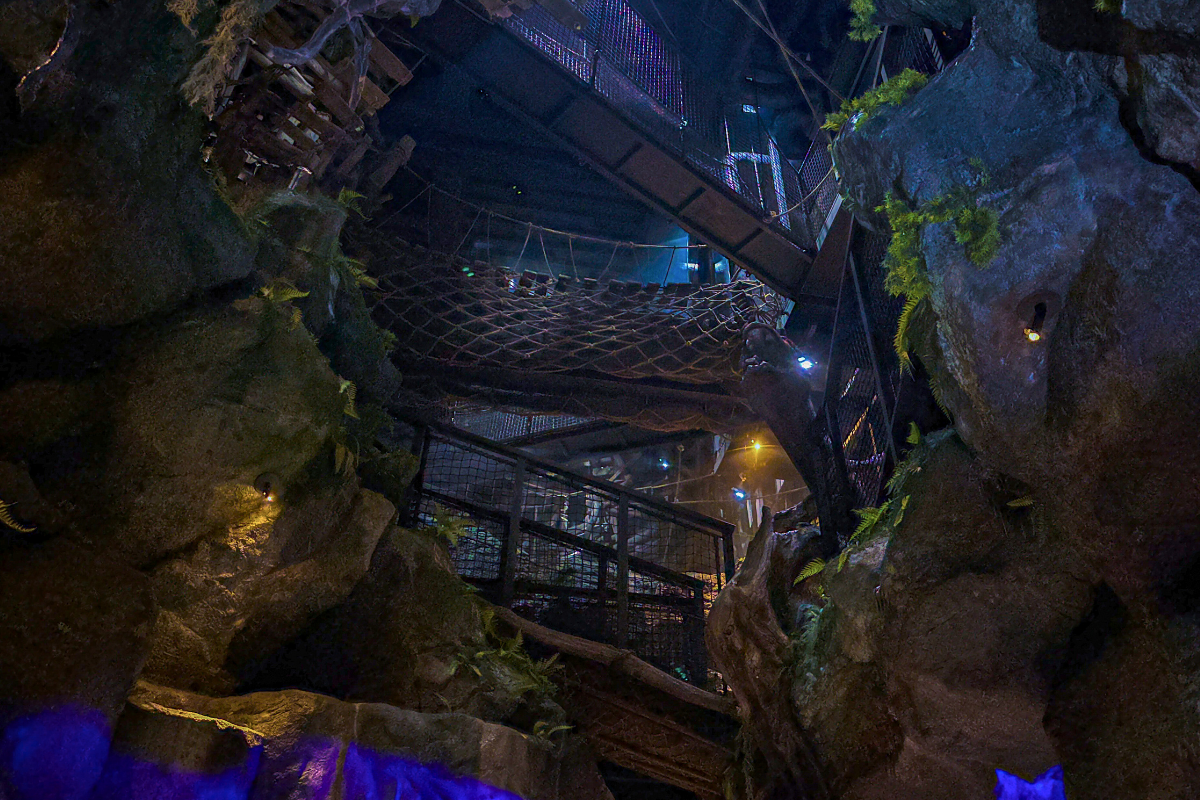

.png)
